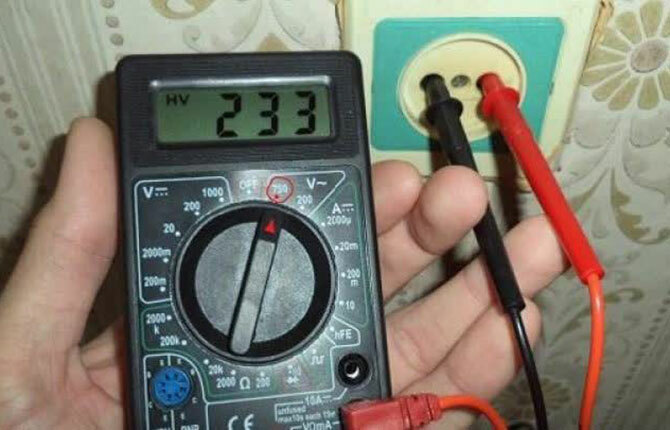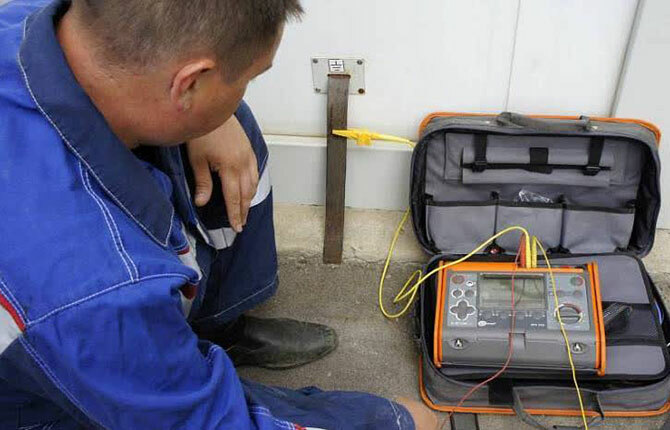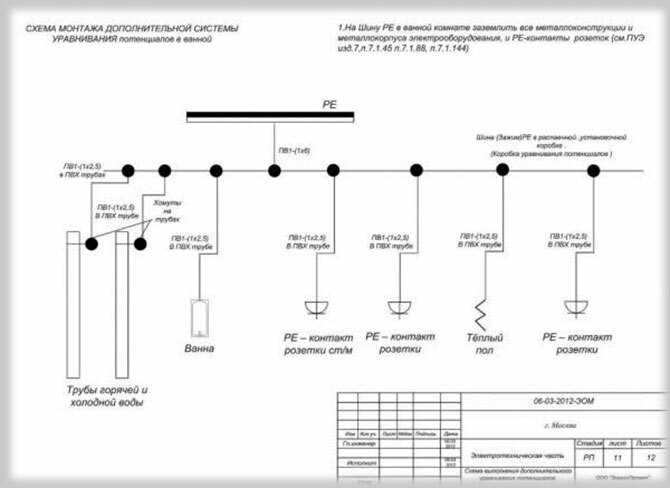There are many reasons why tap water is hot. This situation is abnormal and requires the intervention of a specialist. And it's not even about the level of discomfort experienced by each member of the family. At any moment, a small strain on the tap water can increase and lead to more serious consequences than just a painful prick.
The content of the article:
-
Possible reasons
- No grounding
- Wiring fault
- Electrical fault
- Diagnosing the problem, where to start
- Appliances
- Broken wiring and extension cords
- The fault of the neighbors
- Short circuit in the wiring of the phase and ground wires
- There is no or poor contact on the ground, zeroing in the shield
- How to get rid of electric shocks
Possible reasons
Usually in such a situation, the first thing that comes to mind is the action of the nearest neighbors on the floor. Since time immemorial, the plumbing and heating systems have been used by unscrupulous tenants to turn off readings on electric meters.
Today, this situation is less common. Imagine the surprise of the residents when the water from the tap continues to shock even in the absence of housemates. Most household electrical appliances are the culprit.
The main reasons why tap water can shock:
- Poor quality of grounding electrical appliances for heating or hot water in the house.
- Incorrect connection of electrical appliances.
- The work of powerful consumers of electricity.
In all three cases, the reason is an increase in the potential on the neutral wire. Under normal ground conditions, excess voltage is zeroed.
If the grounding system does not work, or RCD protection devices are not used in the wiring diagram, then small but sensitive electric shocks will appear even with a relatively good electrical equipment.
Some apartment owners who complain about constant microshocks from water taps or even heating systems forget to talk about unaccounted for sockets. Connected without grounding, often in violation of the PUE, and used to power powerful electrical appliances such as heaters, electric ovens, washing machines and air conditioners.
When a powerful load is turned on, an increased potential other than zero will appear due to the voltage drop on the neutral wire. Its value can be from 2V to 25V.
No grounding
Practically in all old houses built at the end of the last century, there was no or conditionally formal grounding system. At that time, it was customary to save on materials, so at best, if there was any grounding, it was connected to a pipe buried in the basement.
Moreover, many homeowners, due to their ignorance, believed that the “zero” in the outlet could be used as a ground, and when installing a new electric heater or water heater, the grounding line of the electrical appliance was disconnected to the neutral wire wiring.
While in the apartments of high-rise buildings the most powerful electrical appliance was an iron, and water pipes, taps and heating communications were made of metal, there were no particular problems. In addition to how quickly the pipes rotted, and the voltage in the network regularly “jumped”.
After 2 kW electric kettles, boilers and air conditioners came into use en masse, and steel pipes changed to plastic ones, the grounding problem resulted in the appearance of excess potential on the water and on electrical appliances.

Just moistened with tap water, the skin of the hands has low resistance, and an electric shock, even in microamps, is very sensitive. The same potential may be present on the body of the refrigerator or washing machine if they are not grounded. Only because of the high resistance of the dry skin of the fingers, the electric shock is not felt.
Wiring fault
This happens if the wire is old (cracks in the insulation), or the cable is regularly jammed, the terminals on the contact (junction) box, on the shield or in the socket are connected carelessly.
In this case, there is a barely noticeable overflow of high potential to the neutral wire. If the process takes place in a stranded wire laid in a strobe under plaster, then the ground line will already help. Any water heater, connected to the water supply, will give an increased potential to the water, flowing through a crack in the insulation.
Electrical fault
Most often, invited master electricians indicate a malfunction of electrical equipment connected to the water supply or heating system. Worn-out water electrovalves, electric pumps, centrifuges, burned-out heating elements remain the main reason for the appearance of excess potential in tap water. They can also cause leakage current.
Moreover, in some cases, in order to receive an electric shock, it is not necessary to turn on an electrical appliance, for example, a heating boiler. It is enough that the equipment is connected to the electrical wiring and water supply.
Diagnosing the problem, where to start
Most master electricians, when asked why the tap is shocking, suggest installing an RCD on the wiring branch that leads to the bathroom and kitchen. This is important to do, but do not rush until the reason why the water from the tap is electrocuted is not identified. The RCD will simply turn off the branch if the potential drain current is above a safe rate. But this will make it difficult to identify the cause.
First of all, it is necessary to check household appliances connected to the water supply. Best with indicator capacity. If, when you touch the case, the neon inside it lights up, then it is this device that is the reason why the water from the tap is electric.

Sometimes it is not only the flow of water with an open tap that is shocked, but also the mixer itself, metal objects, for example, a sink or a water heater body. It is clear that the water is electric due to improperly connected household appliances.
Often, the owners carry out diagnostics without devices, touching in turn the hand of household appliances connected to the water supply. If it hits when it touches, then it is this apparatus that is guilty of inducing an excess potential in the water.
Sometimes they do a wet hand test. In this case, the faulty device will shock more strongly due to the reduced skin resistance. The method is not entirely safe, but for experienced craftsmen it is quite acceptable. You just need to do it right:
- Touch the outer surface of the fingers of the hand, and only with one hand.
- Be in shoes with rubber soles.
Refrigerators of old Soviet models are often shocked (if anyone has it). The reason is the lack of normal grounding and partial breakdown of the potential on the case. This method was usually used by master refrigerators. If, with a light, short-term touch, the refrigerator is shocked, it means that the compressor winding is burnt and breaks into the case.
Sometimes household appliances have a weak current. You will not feel the blow with a dry hand, but if there are fresh scratches or wounds on the skin, then the sensitivity increases. You open the faucet in the kitchen or bathroom with a dry hand, it doesn’t seem to beat, but if you put your fingers under water or close the mixer with a wet palm, you will feel a noticeable electric shock.
The most desperate "specialists" check with both hands. With one hand, they take the end of the wire, fixed with a clamp on the bare section of the metal pipe of the heating system in apartment buildings. The second one carefully alternately touches household appliances connected to the water supply.
In this case, the chances of identifying the culprit who shocks are higher than in the previous one. But at the same time, the risk of getting a severe electric shock with serious consequences increases. It is not necessary to do so - it is better not to risk it. After all, it is not known why the boiler or water heater is shocked. It could be excess potential, or worse, wiring damage. Then the phase enters the body of the device. And a blow through two hands can lead to cardiac arrest even with a small current strength.
Therefore, the first thing to do is to restore normal grounding and check for increased potential on the body of the boiler, boiler or water heater. If everything is in order, you can proceed to a more detailed check.
Appliances
Most of the time, the technique is correct. Modern domestic hot water equipment undergoes special testing and certification of protection against electric shock. But sometimes even new appliances can be the reason that the water under the tap is electric.
This usually happens while working. water heater. The effective voltage usually drops from 220 V to 210 V, depending on the heater power. If, at the time of work, we measure the voltage between the neutral wire and ground (made in accordance with all the rules), then we can see that there will be a potential between “zero” and “ground”.
Try to measure the voltage at the contacts in the outlet of the boiler or electric column with a multimeter without touching the body of the device. And then between zero and the ground terminal. The device will show the presence of potential. You can be sure that the water from the tap is electric at this very moment.
The water in the pipes plays the role of a grounding conductor, and since at "zero" after switching on, a small but increased potential (10-15 V), it will flow over metal and wet surfaces to the parts of the boiler or boiler in contact with the flow of water. A person, having opened a tap, inevitably "crashes" into this circuit, the current goes through the palms and beats slightly, but tangibly. This is especially noticeable in private homes.

Broken wiring and extension cords
In the event that an excess potential appeared on the neutral wire due to the lack of normal grounding, tap water beats with a relatively small current. Most people do not feel or hardly feel such shocks.
Another thing is if the potential appeared due to the direct flow of current to water from the tap due to damage to the insulation of the wiring. In this case, it is very sensitive to current, and regardless of whether the electric heater (boiler) is working or just standing plugged in.
This is especially true for bathroom lighting. Due to damaged insulation, the potential from the phase wire will flow down wet surfaces to the water. In this case, not only she beats, but also a cast-iron bath, and a switched off faucet or shower faucet.
The fault of the neighbors
It may happen that water from the tap is electric even when the water heating and lighting equipment is turned off and de-energized. This means that the increased potential on tap water appeared due to the actions of the neighbors in the apartment building.
Reasons why water is shocking:
- A broken or partially faulty ground loop at a neighbor. All excess potential enters the apartment through water, heating pipes or water supply.
- Faulty (closing) wiring in the neighbor's bathroom through the wall. It is found mainly in panel multi-storey buildings. Steel fittings, even without water, can conduct current from neighbors located 2-3 floors above or below the apartment.
- Use of water supply pipes by neighbors as grounding.
The last option is scary, since there is a real danger of getting a strong electric shock when opening a water tap. In addition, such a “ground” can cause corrosion of steel parts of water heating equipment and even failure of electronic circuit boards on a washing machine or heating boiler.
To make sure that the water from the tap is electric because of the neighbors, it is enough to de-energize apartment and measure the potential difference on the crane itself and the ground bus (but not on distribution board). As old steel pipes are being replaced with polypropylene, the threat has been reduced but not eliminated.
According to reviews, replacing with metal-plastic ones does not solve anything, in most cases, tap water still continues to shock. Until grounding is put in order or potential equalization is performed on the neutral conductor of the wire.

Short circuit in the wiring of the phase and ground wires
The most dangerous and unpleasant situation is when current leakage occurs due to insulation damage and moisture ingress. Sometimes, in order for the water to start surging, it is enough to unsuccessfully drive a nail into the plaster of the wall or pinch the wire with a galvanized profile when lining the kitchen or bathroom with drywall sheets.
This situation is considered one of the most dangerous. The potential at the zero conductor will be greater in magnitude than when conventional household appliances are turned on. And this means that the water under the tap will beat many times stronger.
In addition, there is a risk that not only tap water, but also a heated towel rail and additional radiators for drying clothes, any metal objects that come into contact with the plumbing water.
There is no or poor contact on the ground, zeroing in the shield
If the water suddenly began to shock, then this is a good reason to check the condition of the introductory shield. Especially when it comes to wiring in a private house, where the flow of current through the ground loop is commonplace due to the poor condition of the power grid.

As long as the grounding works properly, the water in the kitchen or bathroom, as a rule, does not shock. But over time, the contact point of the ground bus on the switchboard rusts intensively. After about a year, the contact periodically disappears due to a layer of rust, and the water under the tap and the metal parts of the plumbing are shocked.
The problem needs to be solved not only by repairing grounding, but first of all by restoring the quality of networks. Otherwise, the water in the shower and bathroom will spit every time a neighbor turns on a circular machine or an electric heater in the bath.
How to get rid of electric shocks
It is necessary to put in order the existing grounding in the apartment or private house. There are many ways to check its quality, all of them are described in the PUE.
You can simply dig a steel pipe 1.5-2 m into the ground to its full depth. Water is used to improve contact with the soil.
Next, measure the potential difference between the pipe and the current ground with the power supply turned off on the switchboard and in the on position. In the first case, the multimeter should show zero. If the device shows a potential difference or the water under the tap continues to shock, then you need to go to the neighbors and check their electrical appliances.
With good grounding and no problems with neighboring equipment, the potential difference on the "ground" (with the bag on the shield) and the pipe should not be more than 1-1.5 V.
The next step - install RCD devices on all branches of the electrical wiring leading to the bathroom and the kitchen (where there is water). Check the quality of the electrical wiring and all electrical appliances connected to the water supply system.

If the house or apartment does not have a built-in ground loop, then it will need to be done independently or under an agreement with a private company at the expense of the housing association. Most likely, in such a situation, water from the tap is electric in many apartments, so the residents will support the idea of arranging a full-fledged grounding.
Another option is to install a potential equalization system on the neutral conductor. It will not save you from damaged wiring, but at least the tap water will stop electric shock due to unscrupulous neighbors or when powerful electrical appliances are turned on.
The situation when water spurts from the tap does not look so threatening, but there is cause for concern. As long as the currents are small (microamps), it all comes down to light jabs. But if you leave everything as it is, the current can rise to milliamps, and this is already dangerous to health.
Tell us about your experience in dealing with current leakage through water, how you managed to solve the problem. Bookmark this article so you don't lose any helpful tips.


